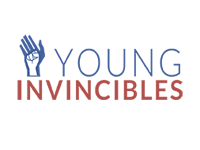How to Improve Outcomes for Opportunity Youth: Engage Employers to Invest in What Works
•Shawn Bohen, Director of Strategic Growth Year Up and Elyse Rosenblum, Senior Consultant Corporate Voices for Working Families
In a time of fiscal restraint, an unemployment crisis among our young people, and a skills gap that hurts our businesses and hampers our recovery, it is vital that public investments in human capital development be targeted to meet labor market demand. By prioritizing outcomes, engaging employers, and reducing bureaucratic barriers, the administration can substantially boost the workforce development system’s impact without spending a single additional cent.
Job creation will be a top priority in the second Obama administration, and there is an opportunity to introduce substantial reforms that will produce the next decade of job creation. The federal government has a critical role to play in the economic recovery by investing in workforce training programs that work. We need to be more strategic about how and where we make these investments for maximum impact.
The reality today is that the current system is not doing a good enough job meeting the needs of either young people or employers:
- 6.7 million Opportunity Youth are at best loosely connected to school or work. Without career pathways, they will cost taxpayers 437 billion over the next five years and 4.7 trillion over their lifetimes.
- Last year, McKinsey found that 30 percent of U.S. companies had positions open for at least six months that they were unable to fill. This underscores BLS data showing 3.6 million vacant positions in the U.S. on Election Day.
- More than 60 billion are spent annually on training in America’s postsecondary schools and WIA programs, but the system often freezes effective programs out of funding.
Millions of young adults are looking for jobs. Employers are eager to fill millions of vacancies. And the federal government stands to realize enormous savings by enabling the market conditions that can bring them together. Our workforce training and higher education systems must prioritize funding organizations and programs that are producing successful outcomes for workers, employers, and taxpayers. They should focus on creating enterprising pathways, training programs that provide a custom fit through specific job skills training and support for both entering talent and employers.
Many of America’s leading companies are already investing in successful enterprising pathway programs. Year Up has 250 corporate partners — including Google, Bank of America, and Linked In — that pay $23,000 for each six month intern they host. Southwire, whose materials are present in one out of every three new homes in the United States, has invested $2.5 million in its 12 for Life partnership with Carroll County (GA) Schools, which provides a pipeline of skilled manufacturing talent for its western Georgia facilities. The administration can facilitate and incentivize such corporate investments, which will leverage public dollars to scale successful and innovative programs.
In our next entry, we’ll share in detail four principles to guide workforce training reform, which will ensure that positive outcomes are created for young people, businesses, and the public: Tie Funding to Outcomes; Engage Employers to Increase Opportunities; Think Holistically about Education, Private Partners, Workforce Organizations, and Employers; and Direct Human Capital Investments to Emphasize Accountability.
For More Information, Contact:
Shawn Bohen, National Director of Strategic Growth & Impact at Year Up, sbohen@yearup.org
Elyse Rosenblum, Senior Consultant to Corporate Voices for Working Families, elyse.rosenblum@gmail.com









